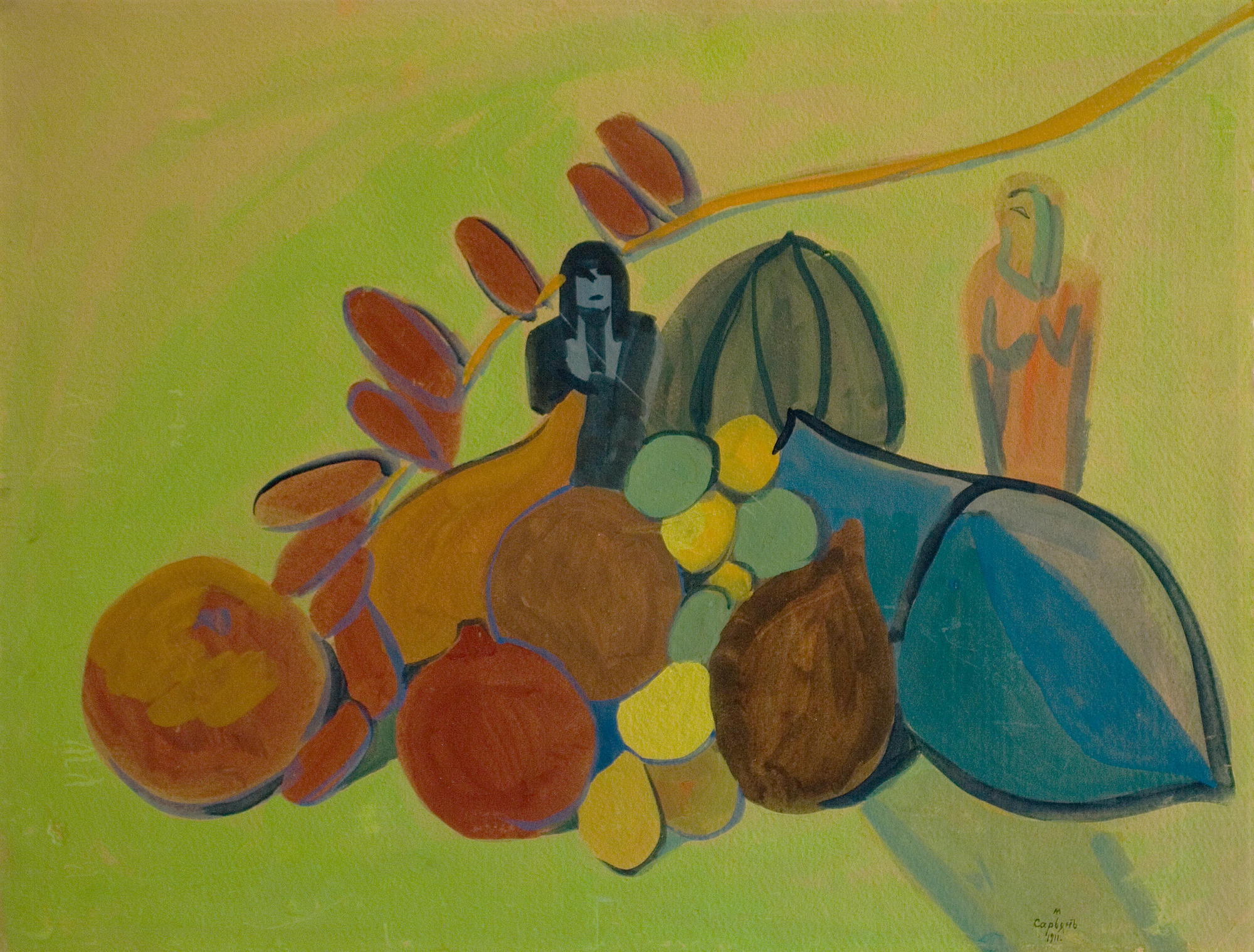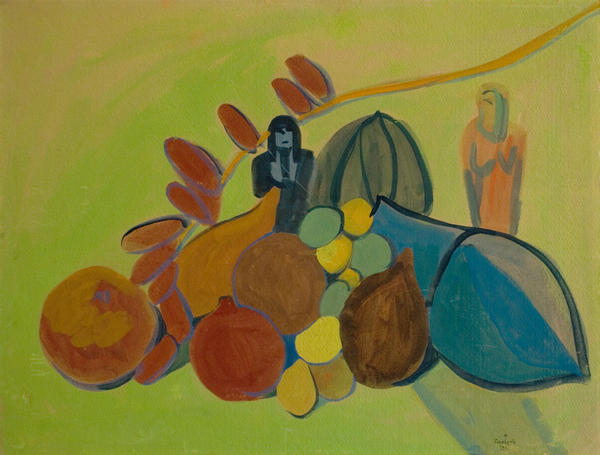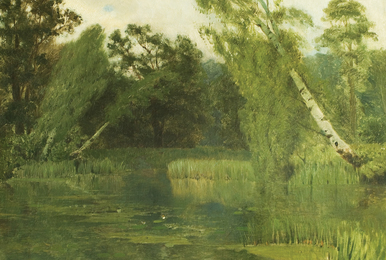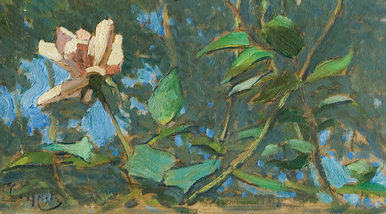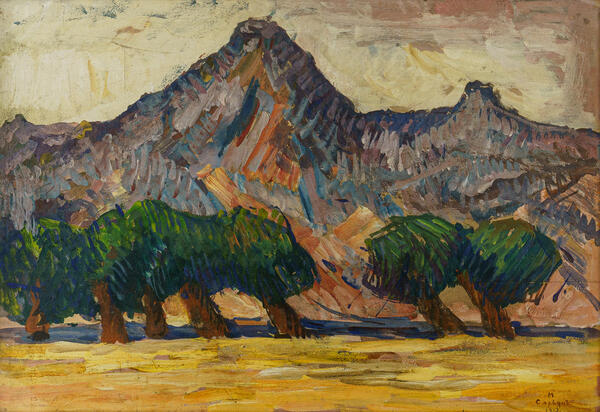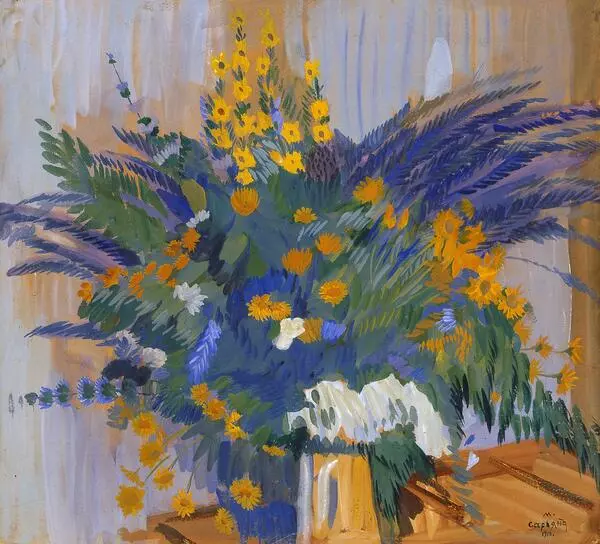The creative work of talented artist Martiros Saryan exerted a great influence on fine arts in Russia and Armenia. Saryan was decorated with a great number of state awards and honorable titles: he was Hero of Socialist Labor, Stalin Prize winner, People’s Artist of the Soviet Union. Martiros Saryan was buried in the Pantheon of Komitas Park — the necropolis of outstanding figures of Armenian culture and science.
Saryan’s early artistic views were influenced by Paul Gauguin and Henry Matisse, as well as impressions from the nature of Turkey, Egypt and Iran, visited by the artist. Paintings created by Saryan during that period received acclaim at exhibitions of the World of Art and the Union of Russian Artists.
Working on his paintings, Saryan rarely mixed paints. According to him, ‘paints, like people, possess their own unique nature that has to be respected. Paints in a painting should be like soloists in an ensemble rather than singers in a choir who are not perceived individually but in groups or even all together. There is no pleasure in looking at a crowd instead of individual faces’. This artistic creed of the master was expressed most strikingly in his still life paintings.
Saryan’s works painted with bright deep colors develop a special aesthetic perception. They do not imitate reality but offer the viewer the freedom of imagination and abstraction.
At the same time, familiar objects in Saryan’s paintings preserve their simple and natural shapes, sine the artist considered nature his main teacher and did not strive to distort it.
Research of Oriental culture became an important trend in the development of the European and Russian art of the XX century. An artist of Armenian descent, Saryan turned to Oriental themes as a key stage in his self-cognition. The desire to understand the Oriental world and himself as a part of that world motivated the artist to set off in the 1910s on a trip to Egypt and Middle East countries — Turkey and Persia.
Saryan’s still life paintings of that period are characterized by fresh palette, simple composition and at the same time highly professional execution.
Astrakhan Art Gallery acquired the Still Life Fruit created in those years from the artist in 1920 in Moscow. The painting was an addition to the still life Pumpkins and Pepper that the Gallery founder Pavel Dogadin bought a year earlier.
Saryan’s early artistic views were influenced by Paul Gauguin and Henry Matisse, as well as impressions from the nature of Turkey, Egypt and Iran, visited by the artist. Paintings created by Saryan during that period received acclaim at exhibitions of the World of Art and the Union of Russian Artists.
Working on his paintings, Saryan rarely mixed paints. According to him, ‘paints, like people, possess their own unique nature that has to be respected. Paints in a painting should be like soloists in an ensemble rather than singers in a choir who are not perceived individually but in groups or even all together. There is no pleasure in looking at a crowd instead of individual faces’. This artistic creed of the master was expressed most strikingly in his still life paintings.
Saryan’s works painted with bright deep colors develop a special aesthetic perception. They do not imitate reality but offer the viewer the freedom of imagination and abstraction.
At the same time, familiar objects in Saryan’s paintings preserve their simple and natural shapes, sine the artist considered nature his main teacher and did not strive to distort it.
Research of Oriental culture became an important trend in the development of the European and Russian art of the XX century. An artist of Armenian descent, Saryan turned to Oriental themes as a key stage in his self-cognition. The desire to understand the Oriental world and himself as a part of that world motivated the artist to set off in the 1910s on a trip to Egypt and Middle East countries — Turkey and Persia.
Saryan’s still life paintings of that period are characterized by fresh palette, simple composition and at the same time highly professional execution.
Astrakhan Art Gallery acquired the Still Life Fruit created in those years from the artist in 1920 in Moscow. The painting was an addition to the still life Pumpkins and Pepper that the Gallery founder Pavel Dogadin bought a year earlier.
